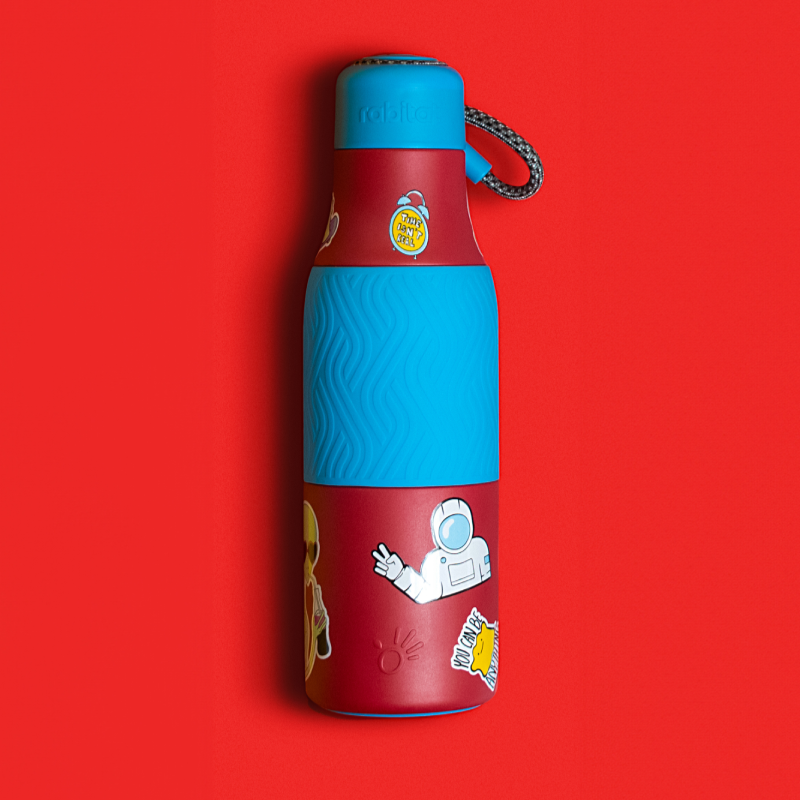We all know the importance of nutrition and a good, balanced diet, we often ignore it when it comes to us. But when our babies pop out in the world, nutrition, food, and diet suddenly become the most important words. Not to mention milk! Isn’t it what we trouble our mothers for even to this day?
So when my daughter was born, it was like a transformation of my whole world. It was like a new world had just been born and I wasn’t the same, nor was anybody else. All she did was cry or sleep. And I was ever-ready to feed her. Why? Because I inherently knew that even a little ignorance could lead to irreversible circumstances.
She is three now - and thankfully healthy. She has been trying to comply with my terms but isn’t very efficient at that. But that’s manageable.
Nutritional requirements are mostly the same for all of us. But it is believed that as they’re in their growing years, which also acts as a backup system for their adult life. Fulfilling a child’s nutritional requirements is anyway a top concern for all mothers, but sometimes, a lack of knowledge may result in unintended happenings.

Here’s a quick, brief guide to help you get away with all the concerns that don’t let you sleep at night:
Toddler Nutrition 101
Nutrients
Basically, our nutrients consist of macro- and micronutrients. Macronutrients are the nutrients that we require in larger amounts, while micronutrients are required in fewer amounts.
1. Macronutrients consist of:
- Proteins: the best sources of proteins are lean meat, poultry, pulses, dairy, fish, soy products like tofu, seeds and nuts, beans and legumes. Proteins are super important as they make almost everything in our body, from our hair to bones to muscles. All enzymes that carry out extremely important biochemical reactions are essentially proteins. Proteins are more important than we think. ( Here’s an app that I use to calculate protein in my daughter’s diet.)
- Carbohydrates: the best sources of carbs are wholewheat bread, rice, cereal, fresh fruits, vegetables, sweets and starchy foods, dairy, oats, quinoa, etc. Carbohydrates are sources of instant energy so make sure that you include these in not only meals but snacks too. (Desserts and fruit juices rich in sugar are also great sources but only meant for occasional treats.)
- Fats: these are considered unhealthy but only the unhealthy saturated fatty acids are unhealthy; unsaturated fats, such as omega-3 fatty acids are very healthy and don’t make us fat. The best sources of healthy fatty acids are avocados, dark chocolate, fish, nuts, and oils such as olive, cheese, whole eggs, and chia seeds. Though fats are mostly energy-giving foods, healthy fatty acids also exhibit anti-inflammatory properties that keep your children safe from acute or chronic inflammation.
These are majorly body-building foods (proteins) and energy-giving foods (carbs and fats). They are extremely essential for a child’s growth years and should make a prominent portion of a toddler’s diet. Their primary function is to meet the body’s energy needs. In essence, a toddler requires foods containing macronutrients to be able to play, be full of energy, and grow in size.
2. Micronutrients consist of:
- Minerals: they further consist of calcium, phosphorus, potassium, iron, magnesium, chlorine, iodine, copper, and zinc. These are also required in different quantities but much lower than macronutrients. All these minerals have different sources, but overall, you must include: green leafy vegetables such as spinach, kale, broccoli, milk and dairy products, lean meat and fish, fresh fruits and vegetables, legumes, and nuts and seeds.
FYI: cow’s milk is low in iron, you’ll have to depend on enriched milks or other food sources for iron and limit the intake of it.
- Vitamins: these are further divided into essential and non-essential vitamins. Essential vitamins can’t be produced in our body; they’re water-soluble and get flushed out of our body easily, and therefore, more of these need to be taken from food. Essential vitamins are - vitamins B complex and C; non-essential vitamins are - vitamins A, D, E and K.
They may have different sources but their requirements must be fulfilled. ( Here’s a comprehensive guide from NCBI that you can refer to for your child’s vitamin needs.)
Our body can make its own vitamin D under the skin in the presence of sunlight. So you and your child must get at least 5-15 minutes of direct sunlight exposure every day. Other sources of vitamins are mainly all the foods we’ve listed so far. This lists the functions and sources for all vitamins. Give them to your child as per their needs.
These aren’t required in larger quantities but are significantly important as they save us from various kinds of diseases. Minerals and vitamins are essential in body functions. Most of the functions performed by our body organs and biochemical reactions are impossible to occur in the absence of these. This is why a deficiency disease doesn’t lead to just one symptom, but a variety of seemingly unrelated symptoms.

You might feel that this is all. But no, there are other things too that should be a part of your child’s everyday meals.
Fiber
Fiber is a very important substance that is present in the skins of fruits and vegetables, fresh fruits, wholegrain bread and cereals, wholewheat, pasta, oats, pulses, beans, bananas, peas, and nuts and seeds, and more.
Many moms know that fiber is important but don’t know why. Fiber plays a remarkable role in maintaining proper digestion in not only the kids, but us too. It supports bowel movements and can, therefore, help a child with hurting tummy that can’t poop. It is also very beneficial in diarrhea, which we mostly can’t save our children from.
More than this, fiber keeps your child feeling full for longer, keeping him from wanting evening junk snacks. This ensures that your child stays away from developing unhealthy eating habits, which can also be concerning for some mothers.
Moreover, there’s some evidence that fiber may help to prevent diabetes.
So, to get your child a daily dose of fiber, you can give them the foods rich in fiber.
You can cook delicious whole wheat pasta full of veggies, sweet oatmeal topped with berries and bananas, or pulses the way they like. You might also want to switch flour bread and pasta with wholegrain and whole wheat ones, respectively, to feed your pumpkins healthy evening snacks.

Probiotics and Prebiotics
One thing that most mothers miss out on is gut health. You might not know how important it is to maintain your child’s overall health. The gut is essentially the center of our body; it is the core. You can’t keep the other parts healthy if you avoid the core.
Our gastrointestinal passage is lined with innumerable colonies of microorganisms - predominantly bacteria - that are utterly beneficial to our overall health (it’s referred to as gut microbiota or microbiome). Of all the other functions they perform, they boost our immunity and aid in digestion. They are also known to produce some essential vitamins.
But since our children keep falling ill and are prone to infections due to already weak immune systems, going to the doctor to get prescription medications is unavoidable. These medications, particularly antibiotics, invariably kill the good gut bacteria too, because they can’t differentiate between the good and the bad. This further weakens the child’s immune system, which makes them way more prone to infections than they otherwise were. But this doesn’t imply that you shouldn’t give your child antibiotics as they could be absolutely necessary.
Whatever the case, many moms depend on home remedies to treat their children, while others trust and refer only to the doctor - and there’s no right stance here.
I know this makes you worried about your child’s health. But don’t worry, mother nature doesn’t fail to impress us. We have some naturally existing or synthetic foods called probiotics that contain living good bacteria, and those that can help the existing gut bacteria to flourish - prebiotics.
The best example of a natural probiotic is yogurt. And surprisingly, many children love to eat it. I make it a point to include yogurt in my daughter’s lunch every day.
It isn’t advised to eat it at night, so avoid its consumption at night.
Some other natural probiotics are sauerkraut, tempeh, kimchi, some types of cheese, natto, miso, and buttermilk.
Some prebiotic foods are garlic, onions, bananas, leeks, asparagus, oats, and apples.

Some other important tips:
- Don’t force it on your child to eat, try to feed them when they’re hungry. Eating without a will is equivalent to eating nothing.
- Help your child pick their favorites by giving them the freedom to choose from the options you choose for them. Also, give them the freedom to pick as much as they want.
- Your child should feel hungry, but not all the time. If you find your child’s eating patterns abnormal, don’t hesitate to seek a doctor.
- Milk is undeniably important but can’t be a substitute for your child’s meals. Don’t overgive it. Your child should drink no more than 2-3 cups a day as it can fill your child’s stomach and prevent them from eating other nutritious food.
Some Recipes to Your Rescue
Now, you must be wondering how you can make your kids eat all these healthy foods. So, I’ve curated a list of delicious, healthy and easy to cook dishes and snacks that you can make for your bundles of joy:
- Fruit & Nut Yogurt
- Popcorn (rich in fiber)
- Trail Mix (a mixture of nuts and dried fruits)
- Baked Vegetable Spring Rolls
- Veg/Non-Veg loaded Pizza with Whole Wheat Crust
- Blueberry/Banana Muffins
- Spinach Avocado Smoothie
- Lentil-Mushroom Burgers
- Energy Balls
- Banana Oat Cookies
I haven’t yet cooked all of these, but my daughter loves baked vegetable spring rolls; we sit together to enjoy them in our evening snacks. She, like all children, absolutely loves the healthy pizza that her mamma makes. Although the recipes aren’t mine, I would love to hear from you how they are so I know if my list requires an update.
Till then,
Happy Mommying and Daddying!















